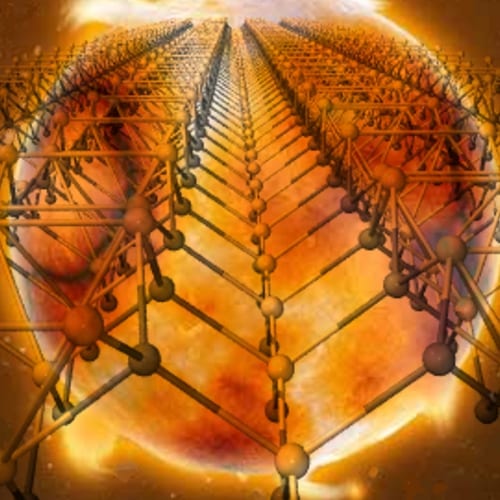 The rapidly growing demand for simulations of larger and increasingly more complex systems in materials science requires a ‘divide and conquer’ approach. Researchers need a toolbox containing various methods, balancing computational cost and accuracy over a wide range of size and time scales. Ideally, this multiscale modelling paradigm would seamlessly connect techniques of overlapping ranges and applicability.
The rapidly growing demand for simulations of larger and increasingly more complex systems in materials science requires a ‘divide and conquer’ approach. Researchers need a toolbox containing various methods, balancing computational cost and accuracy over a wide range of size and time scales. Ideally, this multiscale modelling paradigm would seamlessly connect techniques of overlapping ranges and applicability.
The implementation of tight-binding density-functional theory (DFT) molecular dynamics in the FIREBALL computer code promises to bridge this gap. This will enable predictive simulations of the dynamics of mesoscale systems while keeping the computational cost reasonable.
Pioneered by the FIREBALL developers, numerical atomic orbital basis sets (closely related to so-called fireballs) are now the method of choice for several state-of-the-art DFT codes. Their main advantage over analytical basis sets is their ability to accurately describe an entire radial atomic wave-function with a single function, which radically reduces the basis set size. This, and other developments, allows the cost of a FIREBALL calculation to scale linearly with system size. Compared to standard DFT, speed is dramatically increased by circumventing the usual self-consistency cycle.
The topical section titled “Large-scale simulations in materials science” in the September 2011 issue of pss(b) honours Otto F. Sankey at the occasion of his 60th birthday. A review by J. P. Lewis et al. details the capabilities of FIREBALL and shows how it has been applied with great success to several challenging systems. The range of systems treated using FIREBALL is indeed impressive. Dynamical reconstructions of semi-conductor surfaces and buckyball adsorption on gold were simulated by modelling the lateral displacements of single atoms and the entire atomic force microscope tip simultaneously. Another example is the investigation of variations in charge transport properties with dynamic changes in the structure of amorphous DNA molecules.
The numerical technology at the heart of FIREBALL offers chemically relevant predictions in exceptionally large models, but additionally, these techniques lend themselves particularly well to the parallel architecture of modern computers. This guarantees that FIREBALL will remain relevant in the future as computer architectures become increasingly geared towards parallelism.

















